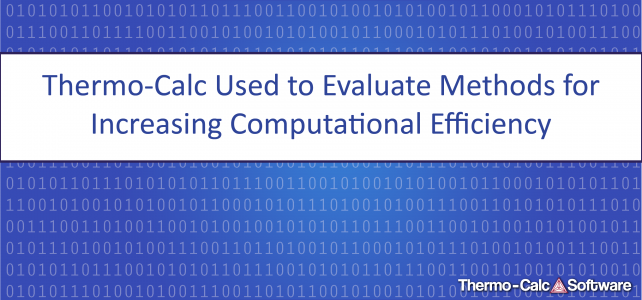A paper published in the March issue of the Journal CALPHAD relies on Thermo-Calc to analyse three methods used to increase the efficiency of computational materials software when applied to high temperature industrial alloys.
The methods were evaluated by the authors using a code written by them, but rely on Thermo-Calc and the TQ-Interface, the interpolation scheme in the Diffusion Module (DICTRA) and the TCNI and MOBNI databases as their foundation.
The reason for using Thermo-Calc is explained in the paper as such:
Thermo-Calc has developed and maintained these databases by compiling and regularly refurbishing the necessary relevant experimental data. With an integrated tool for diffusional calculations (DICTRA), Thermo-Calc provides a commercially available software with an user friendly interface to compute thermodynamic equilibria in various materials and simulate diffusion controlled compositional changes and phase transformations. These tools have been successfully implemented to model the microstructural changes occurring in various industrial multicomponent and multiphase alloys during high temperature exposure. [1]
The authors report mixed results, with efficiency gains in some areas, but slower calculation speeds in other areas.In the paper.

